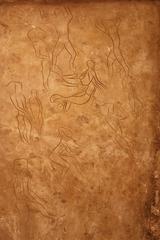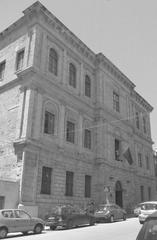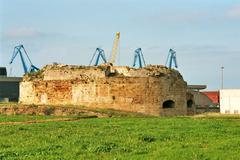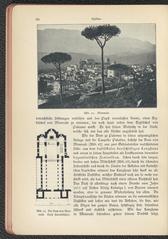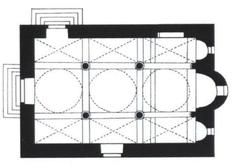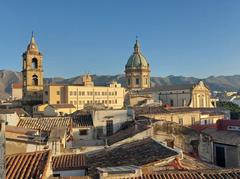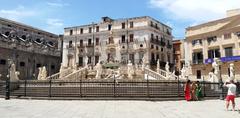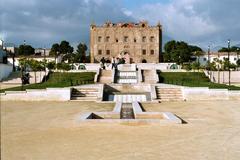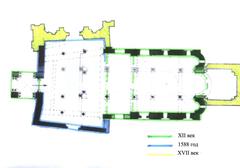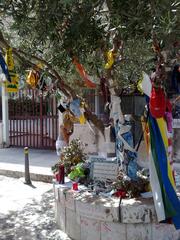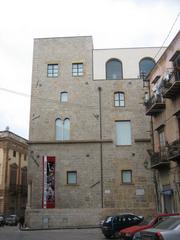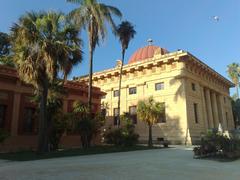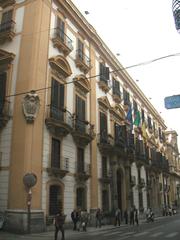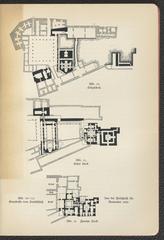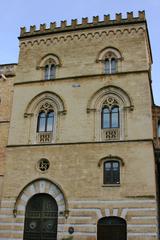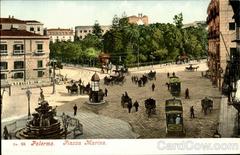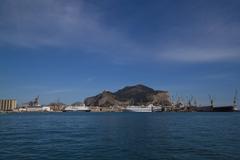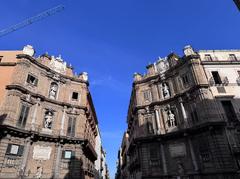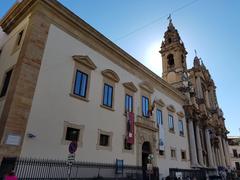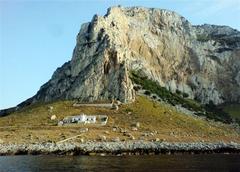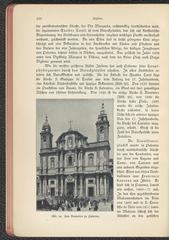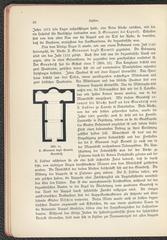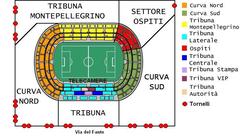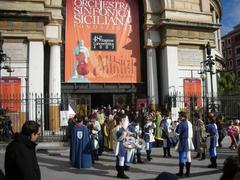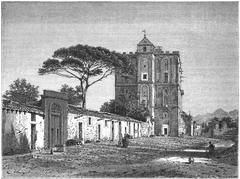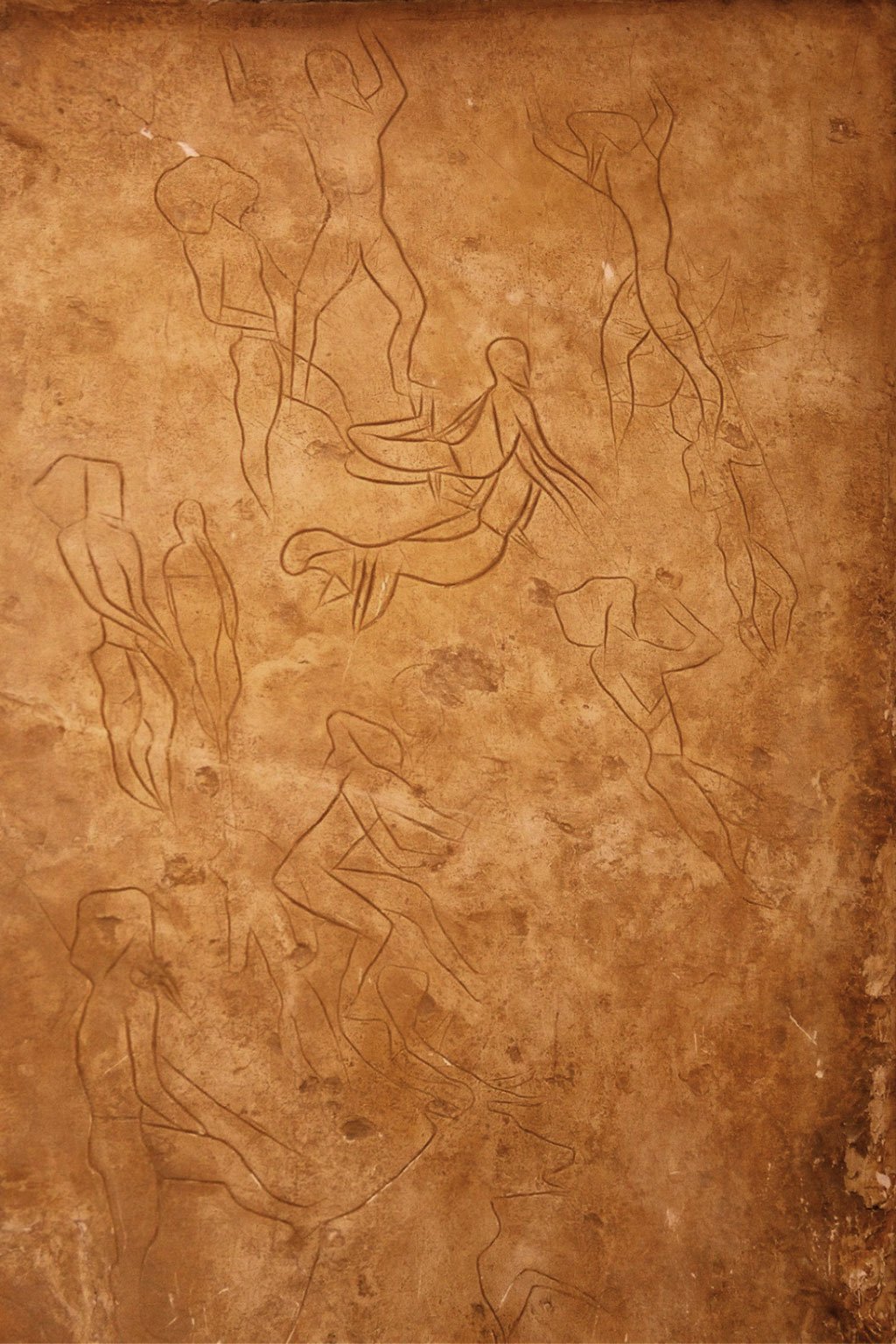
Grotta dell’Addaura Visiting Hours, Tickets, and Palermo Historical Sites Guide
Date: 14/06/2025
Introduction
Situated on the northeastern slopes of Monte Pellegrino in Palermo, Sicily, the Grotta dell’Addaura is a landmark of Mediterranean prehistory. Celebrated for its striking Upper Paleolithic and Mesolithic engravings, the cave complex offers extraordinary insights into prehistoric life, ritual, and symbolic art, dating back approximately 14,000–8,000 BCE. Although closed to the public since 1997 due to safety and preservation concerns, the site’s legacy endures in Palermo’s premier museums and through digital initiatives. This comprehensive guide details the history, archaeological treasures, conservation status, practical visitor information—including visiting hours, ticketing, and accessibility—and alternative ways to experience Grotta dell’Addaura, while also highlighting Palermo’s vibrant historical landscape (Preistoria in Italia, Wikipedia, Museionline, Antonio Salinas Museum).
Prehistoric Human Occupation and Archaeological Evidence
Chronology and Settlement
Grotta dell’Addaura’s occupation spans the late Upper Paleolithic (Epigravettian, c. 14,000–10,000 BCE) through the Mesolithic (c. 10,000–6,000 BCE). Archaeological finds, including stone tools, faunal remains, and the cave’s unique engravings, attest to the presence of hunter-gatherer societies who exploited both coastal and terrestrial resources (Preistoria in Italia).
Discovery and Excavation
The cave’s significance emerged in the late 19th and early 20th centuries, with systematic investigations by researchers such as Jole Bovio Marconi and Luigi Bernabò Brea in the 1940s. The most remarkable discovery came in 1952, when engravings were revealed in Addaura III (Grotta delle Incisioni), marking the site as one of the Mediterranean’s foremost prehistoric art galleries (Museionline).
Archaeological Stratigraphy
Four principal caves—Addaura 1 (Perciata), Addaura 2 (Caprara), Addaura 3 (Grotta delle Incisioni), and Grotta dei Bovidi (Antro Nero)—have yielded a wealth of material, including lithic implements, faunal remains, and portable art. Artifacts from these excavations are now displayed in Palermo’s Museo Archeologico Regionale “Antonio Salinas” and Museo di Paleontologia e Geologia Gaetano Giorgio Gemmellaro (Preistoria in Italia).
The Engravings of Grotta dell’Addaura
Artistic Significance
Grotta dell’Addaura is best known for its parietal art—engraved panels dating to around 12,000 years ago. Unlike other European Paleolithic sites, where animal imagery prevails, Addaura’s art is centered on human figures rendered in dynamic, ceremonial scenes (Wikipedia, Visual Arts Cork).
Main Themes and Interpretations
The most famous panel features over a dozen stylized human figures in a semicircular arrangement, some in acrobatic or dance-like postures, possibly depicting shamanic rituals, initiation ceremonies, or communal punishments. Central to the scene are two prone figures, encircled by others with raised arms—suggesting a sophisticated ritual or social event (Visual Arts Cork, Lasiciliainrete, DigVentures). Academic consensus favors ritualistic interpretations, while fringe theories are unsupported in scholarly research.
Animal Representations
In addition to human figures, the cave features engravings of aurochs, bison, ibex, wild horses, and deer. These images, though fewer in number, are highly naturalistic and provide valuable information on the island’s Pleistocene fauna (Visual Arts Cork, Lasiciliainrete).
Archaeological Finds
Lithic Tools
Excavations have produced Epigravettian and Mesolithic stone tools—blades, scrapers, and hunting points—demonstrating technological adaptation to the local environment (Enjoy Sicilia, Preistoria in Italia).
Pottery and Portable Art
Later occupational layers revealed pottery shards and small decorated objects, likely used as personal ornaments or in ritual contexts (Visual Arts Cork).
Faunal Remains
Remains of the extinct dwarf elephant (Palaeoloxodon falconeri), along with hippopotamus, deer, and wild cattle, have been uncovered, offering a window into the region’s prehistoric ecosystem (Wikipedia).
Conservation and Site Status
Environmental and Human Threats
Grotta dell’Addaura’s limestone setting renders it vulnerable to humidity, temperature variation, and salt-laden air, which hasten erosion. The caves also suffered structural damage during World War II when an explosion revealed the engravings but weakened the site (Tripomatic). Vandalism and unauthorized access have further threatened the art.
Closure and Preservation Efforts
The caves have been closed to the public since 1997, and access is strictly limited to researchers and conservators. Ongoing efforts include structural reinforcement, microclimate monitoring, regular inspections, and advanced digital documentation such as 3D scanning and photogrammetry (Academia.edu). These measures aim to safeguard the engravings for future generations.
Practical Visitor Information
Visiting Hours and Ticketing
The Grotta dell’Addaura remains closed to the public. There are no tickets or public visiting hours available. Unauthorized access is prohibited due to safety risks and site protection (Wikipedia, Discoversicilia).
Museum Experiences
Artifacts and detailed reproductions of the Addaura engravings are on view at:
- Museo Archeologico Regionale “Antonio Salinas”: Central Palermo, features original finds and high-quality reproductions (Antonio Salinas Museum).
- Museo di Paleontologia e Geologia Gaetano Giorgio Gemmellaro: Home to the dwarf elephant skeleton (Gemmellaro Museum).
Museum information:
- Salinas Museum Location: Piazza Olivella, Palermo
- Hours: Tuesday–Sunday, 9:00–19:00; closed Mondays. Check official site for updates.
- Accessibility: Museums are accessible to visitors with disabilities.
Virtual and Educational Access
Many institutions provide virtual tours, 3D models, and scholarly resources on the Addaura engravings, allowing remote exploration of the site’s art and history (Academia.edu).
Alternative Experiences and Nearby Attractions
Other Prehistoric and Cultural Sites
- Grotta del Genovese (Levanzo Island): Guided tours available to a cave with Paleolithic and Neolithic art (Sightseeing Tours Italy).
- Museo Archeologico Paolo Orsi (Syracuse): Renowned for its prehistoric collections (Rick Steves Community).
- Other Grottos: Blue Grotto (Capri), Bue Marino Caves (Sardinia), Grotta dello Smeraldo (Amalfi Coast).
Palermo Historical Sights
- Palermo Cathedral: Showcasing Arab-Norman architecture.
- Norman Palace (Palazzo dei Normanni): Featuring the Cappella Palatina’s mosaics.
- Teatro Massimo: Italy’s largest opera house.
- Monte Pellegrino Natural Reserve: Hiking trails with panoramic city and coastal views.
- Mondello Beach: Ideal for relaxation after cultural sightseeing.
Monte Pellegrino Hiking
Enjoy Monte Pellegrino’s marked trails for scenic vistas of Palermo and the Tyrrhenian Sea. Avoid restricted zones near Grotta dell’Addaura, and follow safety guidance.
Frequently Asked Questions (FAQ)
Q: Can I visit Grotta dell’Addaura?
A: No. The caves are closed to the public; artifacts and reproductions can be viewed at Palermo’s museums.
Q: Are there tickets or visiting hours for the site?
A: No tickets or hours are available due to closure.
Q: Where can I see Addaura artifacts?
A: At the Museo Archeologico Regionale “Antonio Salinas” and the Gemmellaro Museum in Palermo.
Q: Is the site accessible to people with disabilities?
A: The caves are not accessible, but the museums are equipped for visitors with disabilities.
Q: Are there guided tours or virtual experiences?
A: No cave tours are available, but museum and virtual experiences, as well as educational resources, are offered.
Visitor Options: Summary Table
| Experience Type | Accessibility | Key Features | Website/Contact |
|---|---|---|---|
| Grotta dell’Addaura (on-site) | Closed | Not accessible due to safety concerns | Wikipedia |
| Museo Archeologico Salinas | Open | Artifacts, reproductions, educational exhibits | Official Site |
| Grotta del Genovese | Guided tours | Prehistoric art, accessible by boat | Sightseeing Tours Italy |
| Monte Pellegrino Trails | Open | Hiking, panoramic views, nature | Local tourism offices |
| Virtual Resources | Online | Photos, reconstructions, academic studies | University and museum websites |
Visuals and Media
- Grotta dell’Addaura engravings (museum reproductions): “Grotta dell’Addaura prehistoric engravings”
- Museo Archeologico Salinas: “Museo Salinas Palermo archaeological artifacts”
- Monte Pellegrino views: “Monte Pellegrino panoramic views Palermo”
Conclusion and Recommendations
The Grotta dell’Addaura, though closed for direct visitation, stands as a cultural jewel of Sicily, revealing humanity’s ancient creative spirit. Visitors to Palermo can explore its legacy through museum exhibitions, virtual tours, and educational resources. Complement your visit with Palermo’s many historical and natural attractions, and always observe safety and preservation guidelines.
Stay informed about reopening, events, and new exhibits by consulting official sources and using digital platforms like the Audiala app. Through responsible tourism and virtual engagement, the story of Grotta dell’Addaura remains accessible and inspiring.
For further details, visit Preistoria in Italia, Museionline, and the Palermo Tourism Official Website.
